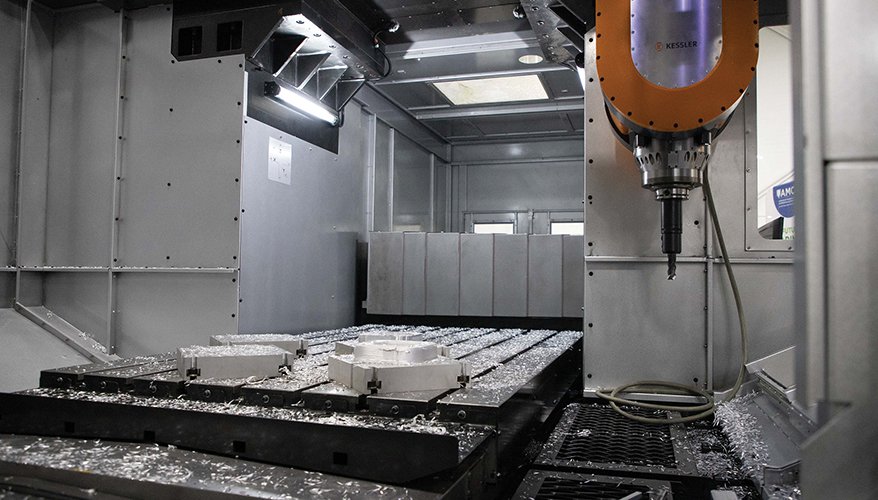Sean Carberry

Army photoARLINGTON, Virginia — The Army has partnered with SAE Government Technologies to open the Additive Manufacturing Commercialization Center, or AMCC, in Sterling Heights, Michigan, to advance 3D printing capabilities.
The centerpiece of the AMCC is the Ingersoll-made Jointless Hull subsection tool — a hybrid 3D printer and metal miller that can fabricate aluminum parts and tools, said Brandon Pender, associate director for the Ground Vehicle Systems Center’s Materials Division under Army Combat Capabilities Development Command.
“Right now, our plan is to put four different 3D printing technologies … in the center,” he said. But the hope is that other companies or entities will bring technologies into the SAE-owned facility for experimentation, he added.
The goal is “to commercialize advanced manufacturing technologies, so that they spin out of the government and into industry,” he continued. “The reason we want that is so that it comes back to us in new designs and new manufacturing methods of making things for the Army.”
The massive Jointless Hull tool uses a printer head designed by MELD Manufacturing, a woman-owned small business from Christiansburg, Virginia, he said. The friction-stirred deposition technology allows metal to be printed without heating.
The printer can manufacture items up to a cubic meter in size, he said. A second machine at the Rock Island Arsenal in Illinois, can produce items 20-feet wide by 30-feet long by 15-feet high, he said.
The center will initially produce molds for auto parts trays and parts for General Dynamics and auto manufacturers, he said. For now, the facility will focus on non-critical parts, but the goal is to expand the inventory of certified parts that soldiers could someday print in the field.
“For that to be a useful technology for soldiers, especially toward the tip of the spear toward the front line, they have to have a cookbook or a recipe book of things they can make that they know are qualified, that they know are safe,” he said.
Currently, there are hundreds of parts that are certified for 3D printing, “and we're looking to scale that year by year to get to thousands,” he said.
No comments:
Post a Comment